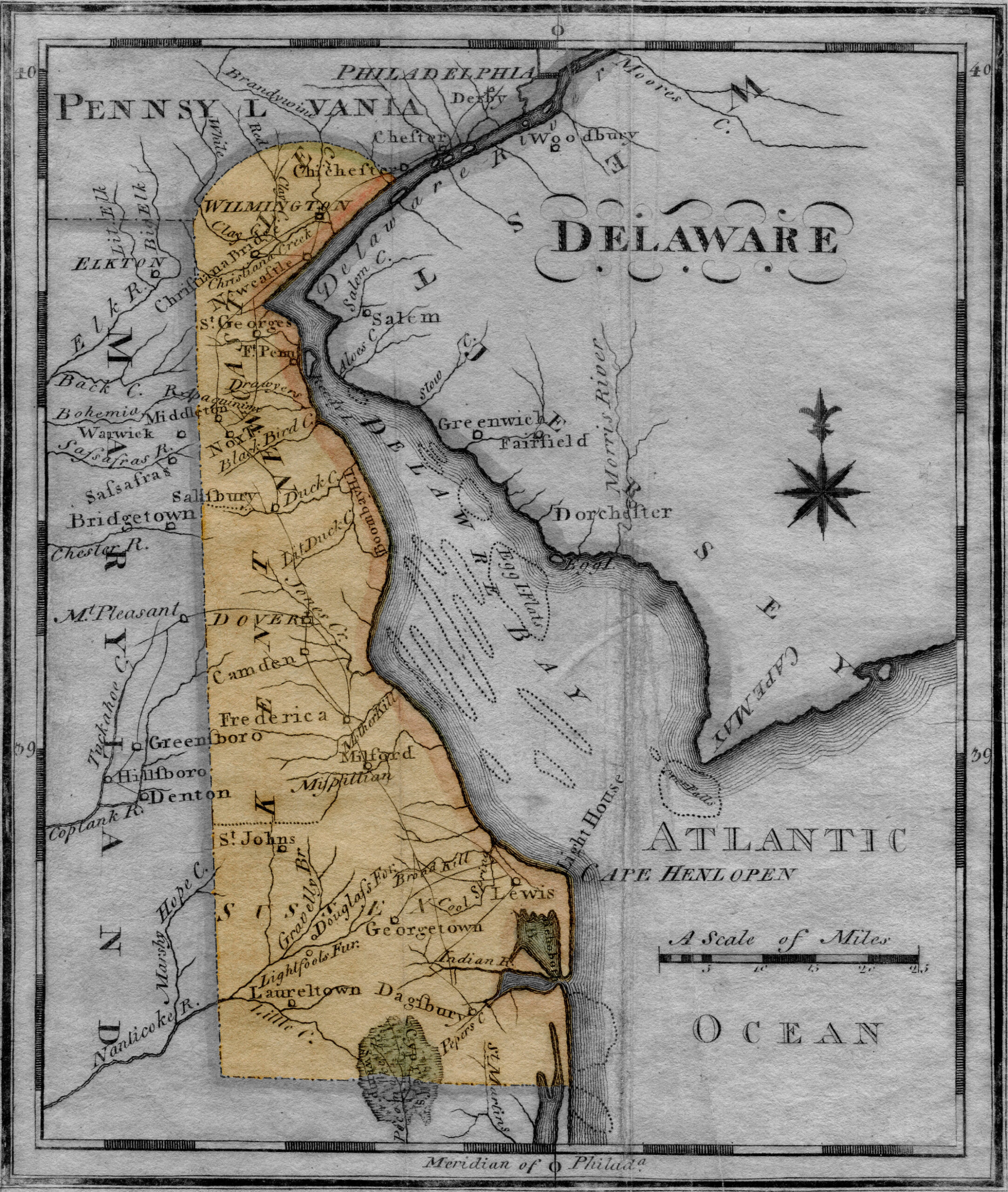About Delaware

Facts About the State of Delaware
Delaware may be the second smallest state in the USA, but it certainly packs a punch when it comes to its rich history and fascinating facts. Known as the “First State,” Delaware played a vital role in the founding of the United States, with its residents signing the Declaration of Independence and Constitution. From its colonial beginnings to its modern-day charm, Delaware has plenty of stories to tell.

Delaware State Facts FAQ
How did Delaware become a state?
What's Delaware's Flag?
What's the capital of Delaware?
What are the counties of Delaware?
How did Delaware get its name?
What's Delaware's government?
Delaware State Facts Flashcards
State Bird
Blue Hen
Named in February 1939 after the “Fighting Blue Hens” the mascot of Delaware Revolutionary War soldiers.
State Butterfly
Tiger Swallowtail (Pterourus glaucus)
Adopted June 10, 1999.
State Flower
Peach Blossom
Adopted on May 9, 1895. Beginning in the early 1800s, Delaware became a leading producer of peaches until a blight called “the yellows” destroyed the orchards in the late 1800s.
State Fruit
Strawberry
Adopted as the state fruit in 2010.
State Herb
Sweet Golden Rod
Adopted June 24, 1996 and indigenous to Delaware. Found throughout the state along coastal areas and by marshes.
State Insect
Ladybug
Adopted April 25, 1974, after state schoolchildren petitioned the General Assembly.
State Tree
Holly American
Adopted on May 1,1939. During the late nineteenth century until the 1930s, Sussex County became the leading supplier of holly, used for Christmas decorations and wreaths.
State Fish
Weakfish
Also known as the sea trout or the yellow fin trout, the weak fish was adopted as state fish in 1981, in recognition of sport fishing’s recreational and economic standing in the state of Delaware.
State Beverage
Milk
Adopted on June 3, 1983.
State Colors
Colonial blue and buff
Representing the uniform of General George Washington.
State Shell
Shell of the channeled whelk
Adopted in May 2014.
State Marine Animal
Horseshoe Crab
Adopted on June 25, 2002.
Land Acknowledgement
We begin by acknowledging with respect, that we gather today in Lenapehoking, traditional homeland of the Lenape people for tens of thousands of years. Sometimes translated “Original People,” the Lenape were known as mediators and called “The Grandfathers”. Encompassing the Delaware River Basin, Lenapehokink includes present-day New Jersey, most of Delaware, the Eastern parts of New York and Pennsylvania, and was home to 20,000 Lenape.
Resources
- Search DHS collections to learn more about the history of Indigenous Peoples in Delaware
- Visit the Delaware History Museum and Mitchell Center for African American Heritage to see the “One State, Many Stories” exhibition
- Download the Lenape and Settlers in New Sweden primary source packet
Additional Reading
- “A Guide to Indigenous Land Acknowledgement” (Native Governance Center)
- “So you began your event with an Indigenous land acknowledgment. Now what?” (NPR)
- “Honoring Original Indigenous Inhabitants: Land Acknowledgment” (Museum of the American Indian)





